Complete Solutions to COMPETITION FOCUS JEE (Main and Advanced)/ MEDICAL ENTRANCE SPECIAL (I. MULTIPLE CHOICE QUESTIONS WITH ONE CORRECT ANSWER)) of chapter CHEMICAL BONDING AND MOLECULAR STRUCTURE of Class 11 book with complete answers and questions
| Class 11 | CHEMISTRY |
| Chapter | CHEMICAL BONDING AND MOLECULAR STRUCTURE |
| PRADEEP | COMPETITION FOCUS JEE (Main and Advanced)/ MEDICAL ENTRANCE SPECIAL (I. MULTIPLE CHOICE QUESTIONS WITH ONE CORRECT ANSWER)) |
| Number Of Questions | 100 |
| Academic Year | 2023-24 |
It is believed that atoms combine with each other such that the outermost shell acquires a stable configuration of 8 electrons. If stability were attained with 6 electrons rather than 8. What would be the formula of the stable fluoride ion.
View SolutionIn which of the following compounds does not
central atom obey the octet rule ?
View SolutionBased on lattice energy and other considerations which one of the following alkali metal chlorides is expected to have the highest melting point
View SolutionWhich of the following species contains three bond pairs and one lone pair around the central atom?
View SolutionIn which of the following the central atom has
two lone pairs of electrons ?
View SolutionThe number of lone pairs of electrons on central atom of `H_(2)O,SnCl_(2),PCl_(3)and XeF_(2)` respectively are:
View SolutionWhich of the following compounds contain(s) no covalent bond(s)?
`KCl,PH_(3),O_(2),B_(2)H_(6),H_(2)SO_(4)`
View SolutionWhich of the following has a regular geometry
View SolutionPredict the correct order of repulsions among the following :
View SolutionTotal number of lone pair of electrons in 3 `I_(3)^(-)` ion is
View SolutionThe strength of the covalent bond in `H_(2) , F_(2)` and
HF is in the order
View SolutionThe number and type of bonds between two carbon atoms in calcium carbide are
View SolutionHow many bonds are there in

View SolutionIn `[Ag(CN)_2]^(-)`, the number of `pi` bonds is
View SolutionWhich of the following species contains equal number of pi and pi bonds ?
View SolutionThe covalent bond length is the shortest in which of the following bonds
View Solutionv_100_subject_string_diff_newFlow
View SolutionFor AB bond if percent ionic character is plotted
against electronegativity difference `(X_(A) - X_(B))`, the
shape of the curve would look like
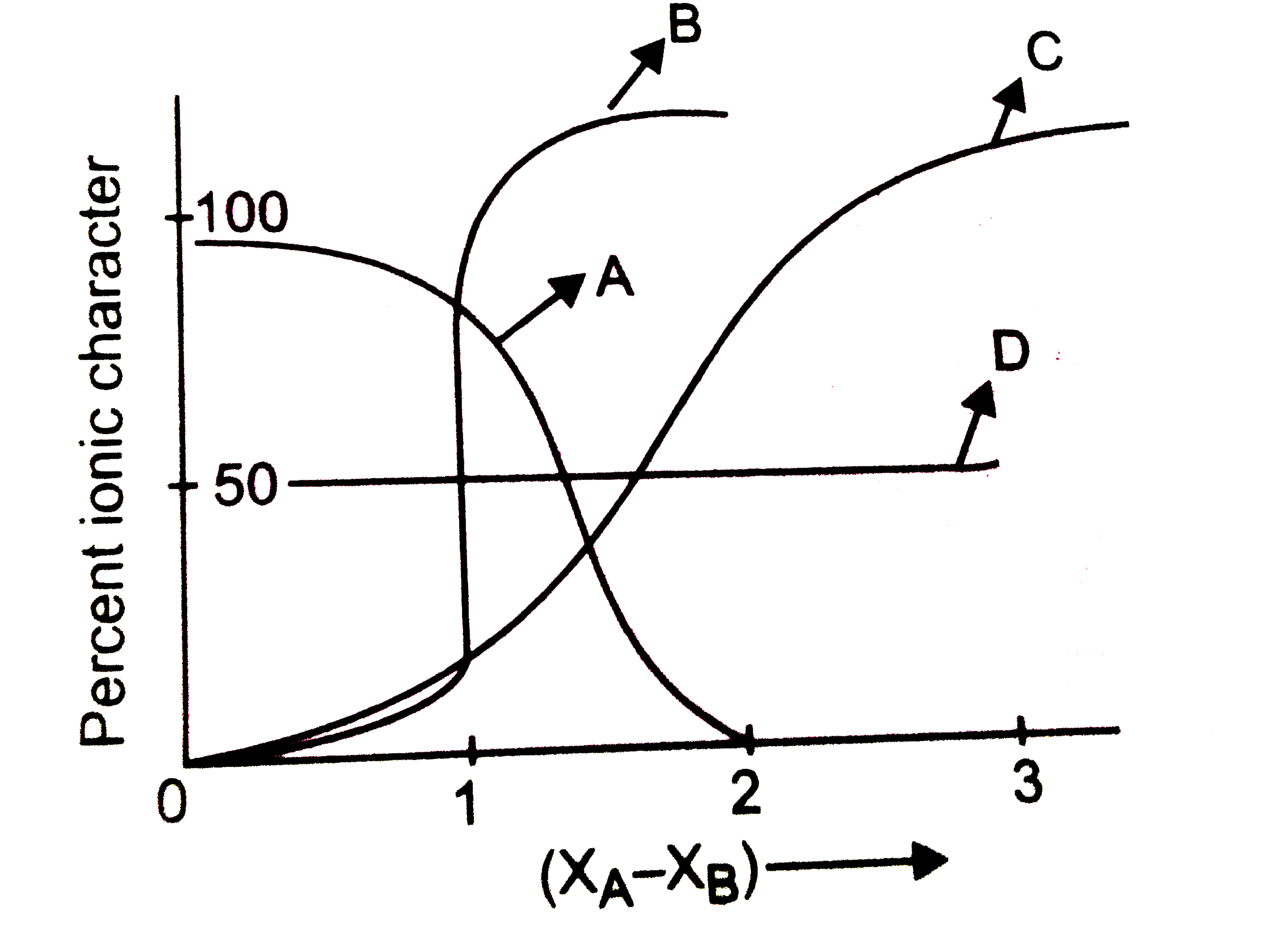
View SolutionArrange the following compounds in order of increasing dipole moment, Ethylbenzene (I), m-dichlorobenzene (II), o-dichlorobenzene (III), p-dichlorobenzene (IV)
View SolutionAmong the following, the molecule with the highest dipole moment is :
View SolutionWhich one of the following arrangements of molecules is correct on the basic of their dipole moments?
View SolutionAmong the following, the molecule with the highest dipole moment is :
View SolutionWhich of the following has maximum dipole moment?
View SolutionWhich are non-polar molecules?
`I. NCl_(3) " "II. SO_(3)" "III. PCl_(5)`
The correct option is :
View SolutionWhich bond angle `theta` would result in the maximum
dipole moment for the triatomic molecule, `XY_(2)`
shown below ?
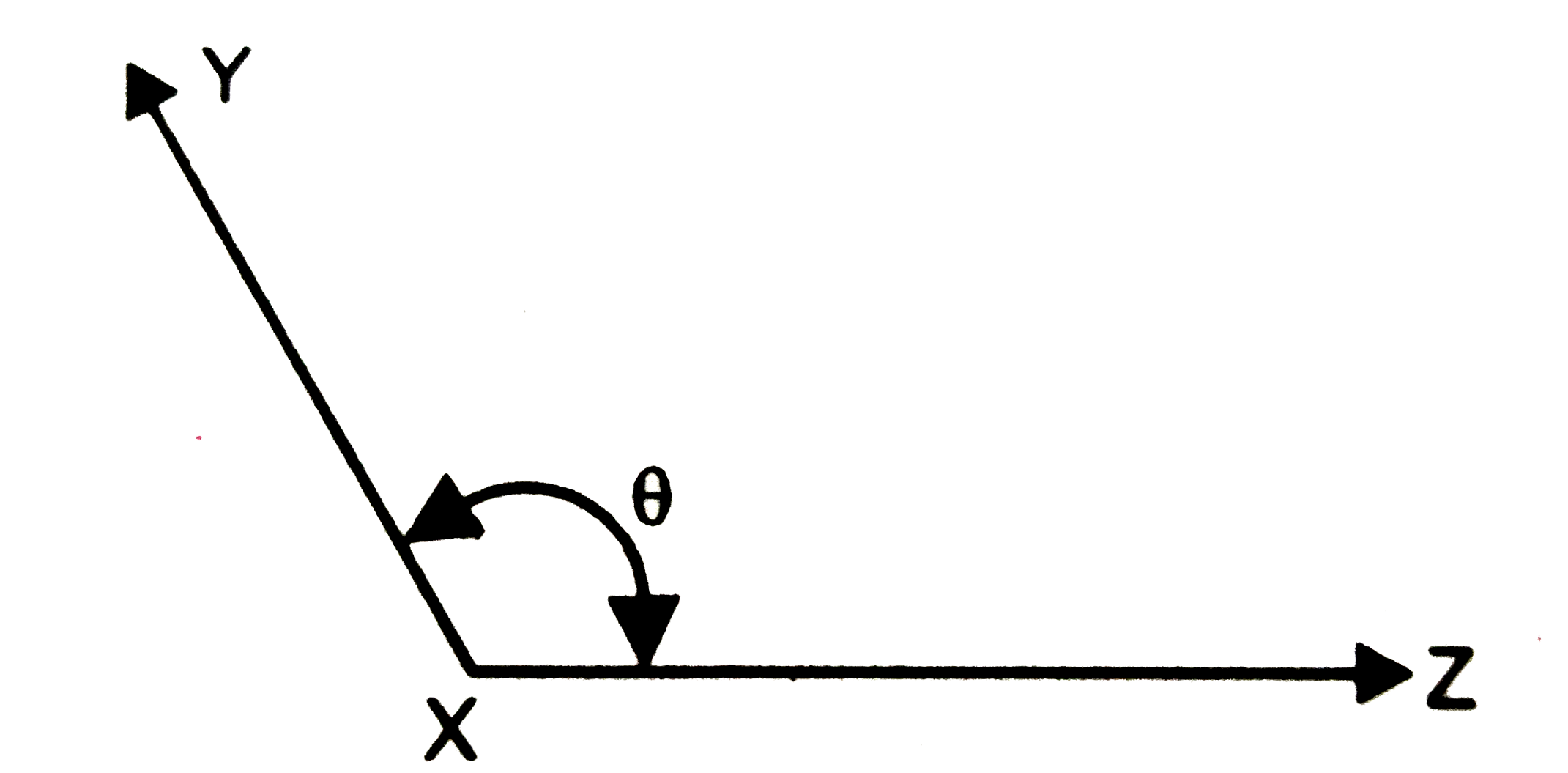
View SolutionThe dipole moment of
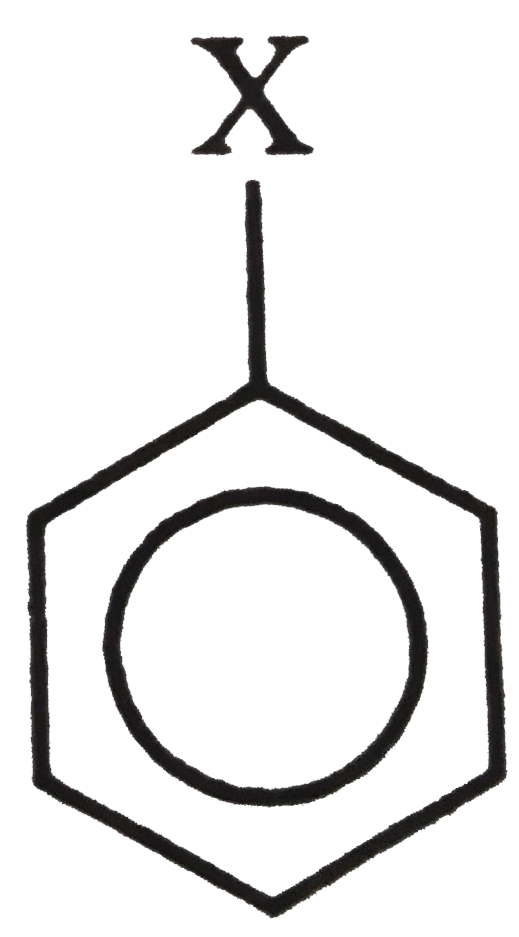
The dipole moment of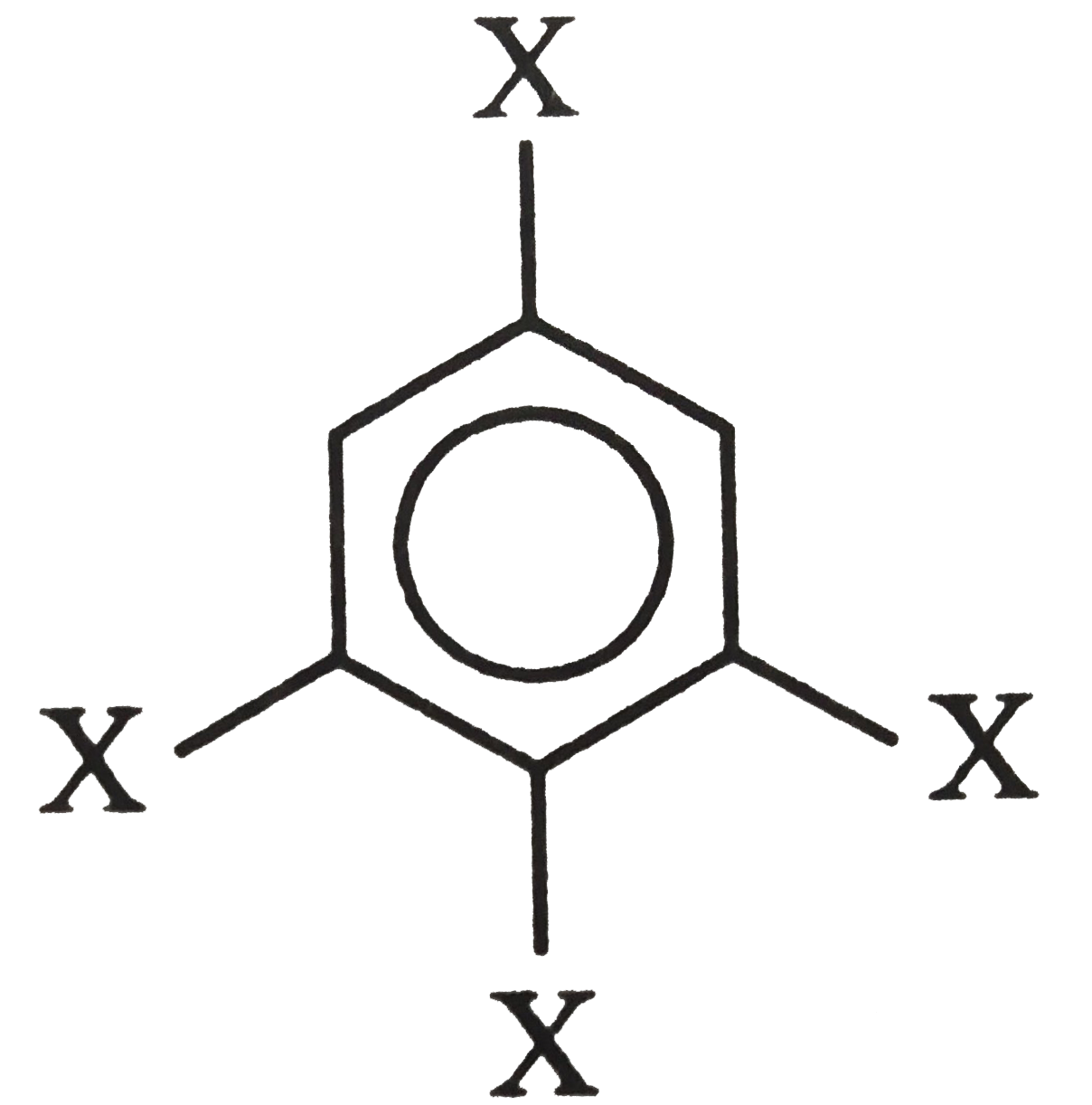
View SolutionThe correct order of increasing polarising power of the cations in the following `AlCl_(3) , MgCl_(3) , NaCl` is
View SolutionThe charge/size ratio of a cation determines its polarizing power. Which one of the following sequences represents the increasing order of the polarizing power of the cationic species, `K^(+), Ca^(2+), Mg^(2+), Ba^(2+)`?
View SolutionWhich of the following is a polar molecule ?
View SolutionFor which of the following molecules, significant
`mu ne o` ?
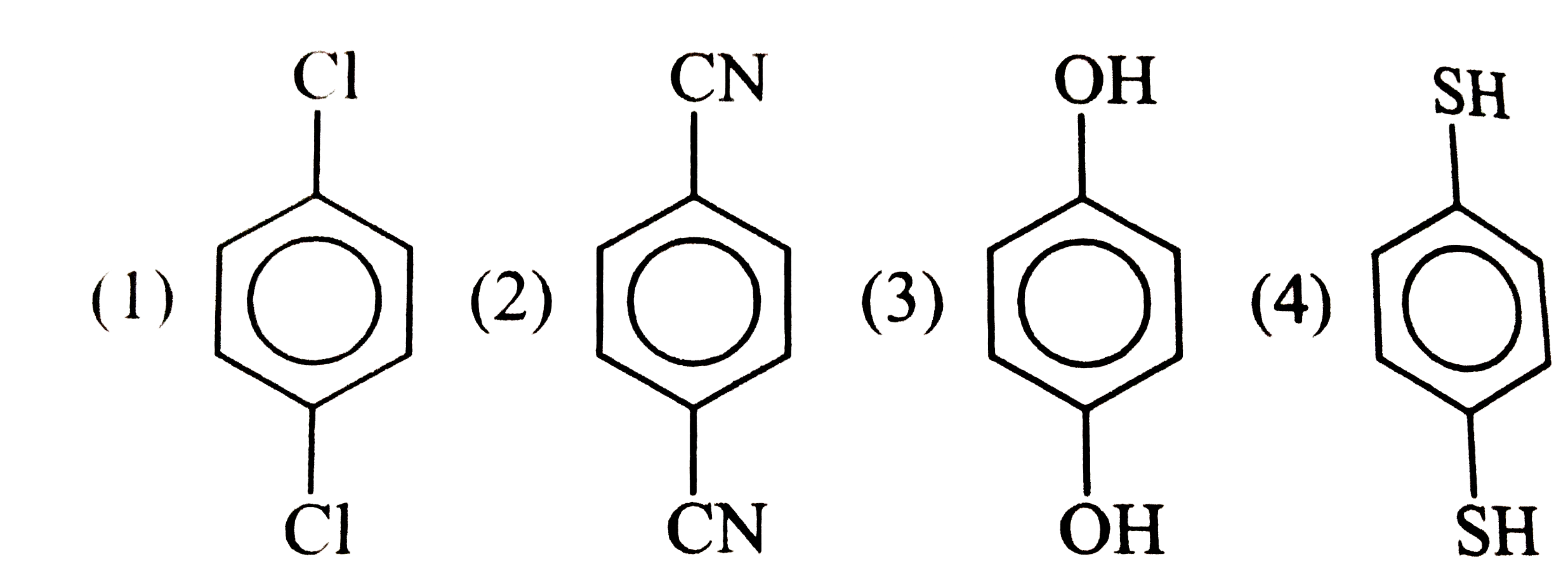
View SolutionSome ether is added to anb aqueous soluetion of a mixtrue of `LiCl, NaCl and AlCl_(3)` . Which will be extracted into ether ?
View SolutionAmong the following species, identify the isostuctural pairs
`NF_(3). NO_(3)^(-), BF_(3), H_(3)O, HN_(3)`
View SolutionWhich of the following pairs of ions are isoelectronic and isostructural?
View SolutionThe type of hybrid orbitals used by chlorine atom
in` ClO_(3)^(-)` is
View SolutionWhich one of the following compounds has `sp^(2)` hybridisation ? .
View SolutionThe hybridization of atomic orbitals of nitrogen is `NO_(2)^(+), NO_(3)^(-)`, and `NH_(4)^(+)` respectively are
View SolutionThe correct order of hybridisation of the central atom in the following species `NH_(3), [PtCl_(4)]^(2-), PCl_(5)` and `BCl_(3)` is
(At. No. Pt = 78)
View SolutionThe shapes of `SF_(4)andXeF_(2)` respectively are
View SolutionThe pair having similar geometry is
View SolutionThe maximum number of `90^(@)` angles between bond pair-bond pair of electrons is observed in
View SolutionThe ion with maximum number of lone pairs on the central atom is-
View SolutionConsider the following molecules or ions :
(i) `CH_(2) Cl_(2) (ii) NH_(4)^(+) (iii) SO_(4)^(2-) (iv) ClO_(4)^(-) (v) NH_(3)`
`sp^(3)` hybridisation is involved in the formation of
View SolutionThe hybridization of oxygen atom in `H_2O_2` is
View Solution`SF_(2),SF_(4)` and `SF_(6)` have the hybridisation at sulphur atom respectively as .
View SolutionThe percentage of p-character in `SF_(6)` are
View SolutionThe percentage of p character of hybrid orbitals in graphite and diamond are respectively
View SolutionThe d-orbital involved in the hybridization in `PCl_(3) ` molecule is
View SolutionIn which one of the following species the central atom has the type of hybridization which is not the same as that present in the other three ?
View SolutionSome of the properties of the two species, `NO_(3)^(-)` and `H_(3)O^(+)` are described below.Which one of them is correct?
View SolutionWhich one of the following conversions involve change in both hybridisation and shape?
View SolutionWhich of the two lons from the list given have the geometry that is explained by the same hybridization of orbitals `NO_(2)^(-),NO_(3)^(-) ,NH_(2)^(-) NH_(4)^(+) SCN^(-)`?
View SolutionThe correct sequence of decrease in the bond angles of the following hydrides is
View SolutionThe nodal plane in the `pi`-bond of ethene is located in:
View SolutionShape of `O_(2)F_(2)` is similar to that of
View SolutionThe `ONO` bond angle is maximum in
View SolutionIn `I_(3)^(-)` , Lewis base is
View SolutionIn which of the following molecules are all the bonds not equal ?
View SolutionWhich of the following species has a linear shape ?
View SolutionIf `I_2` is dissolved in aqueous KI, the intense yellow species `I_3^` is formed. The structure of `I_3^-` ion is
View SolutionIn which pair of species, both species do have similar geometry
View SolutionThe incorrectly matched pair, among the following is
View SolutionTwo types of FXF angles are present in which of the following molecule (X = S, Xe, C)
View SolutionOut of `N_(2) O , SO_(2), I_(3)^(+), I_(3)^(-), H_(2)O, NO_(2)^(-) and N_(3)^(-)`
the linear species are
View SolutionWhich of the following species is non-linear ?
View SolutionThe species having pyramidal shape is
View SolutionThe correct order of increasing bond angles in the following species is
View SolutionAmong the following molecules : `SO_(2),SF_(4) ,CIF_(3) ,BrF_(5)` , and `XeF_(4)` , which of the following shapes does not describe any of the molecules mentioned ?
View Solution`XeF_(2)` is isostructural with
View SolutionThe species in which the N-atom is in a state of sp hybridisation is
View SolutionConsider the molecules `CH_(4),NH_(3)` and `H_(2)O` which of the given statement is false ?
View SolutionThe species having bond angle of `120^(@)` is
View SolutionWhich of the following pairs of compound is isoelectronic and isostructure ?
View SolutionWhich one of the following contains ionic , covalent and coordinate bonds ?
View SolutionWhich of the following has `p pi - d pi ` bonding ?
View SolutionThe correct stability order of the following resonance structures is
`(I)H_(2)C = overset(+)N = overset(-)N" "(II)H_(2)overset(+)C - N = overset(-)N`
`(III)H_(2)overset(-)C - overset(+)N = N" "(IV)H_(2)overset(-)C - N = overset(+)N`
View SolutionWhich of the following is a the most preferred and hence of the lower energy for `SO_(3)`?
View SolutionConsider the statements :
I . Bond length in `N_(2)^(+) is 0.002 Å` greater than in `N_(2)`
II. Bond length in `NO^(+) is 0.09 Å` less than in NO
III. `O_(2)^(2-)` has shorter bond length than `O_(2)`
which of the following statements are ture ?
View SolutionThe correct order of increasig `C-O` bond length of `CO, CO_(3)^(2-), CO_(2)` is
View SolutionIn which of the following ionixation processes , the bond order has increased and the magnetic behaviour has changed ?
View SolutionThe species having bond order different from that in `CO` is
View SolutionThe correct order of bond order values among the following
(i) `NO^(-)` (ii) `NO^(+)`
(iii) `NO` (iv) `NO^(2+)`
(v) `NO^(2-)`
View SolutionWhich one of the following pairs consists of only paramagnetic species
View SolutionThe magnetic moment of `KO_(2)` at room temperature is ---------- BM.
View SolutionWhich of the following options represents the correct bond order ?
View SolutionDecreasing order of stability of `O_(2), O_(2)^(-), O_(2)^(+)` and `O_(2)^(2-)` is
View SolutionFour diatomic species are listed below in different sequences. Which of these represents the correct order of their increasing bond order?
View SolutionWhich one of the following pairs of species have the same bond order ?
View SolutionThe pair of species with the same bond order is :
View SolutionConsider the following species
`CN^(-),CN^(-),NO and `CN`.
Which one of these will hqave the highest bond order ?
View SolutionDuring change of `NO^(+)to NO`, the electron is added to
View SolutionThe common featrues among the species `CN^(-), CO and CO^(+)` are
View SolutionWhich is the correct statement about `sigma` and `pi` molecular orbitals? Statements are
(i) `pi` bonding orbitals are ungerade
`pi` antibonding orbitals are ungerade
(iii) `sigma` antibonding orbitals are gerade
View SolutionAssuming that Hund's rule is violated the bond order and magnetic nature of the diatomic molecle `B_(2)` is
View SolutionWhich statements are correct for the peroxide ion ?
(1) It has five completely filled anti - bonding molecular orbitals
(2) It is diamagnetic
(3) It has bond order one
(4) It is isoelectronic with neon
View SolutionThe pairs of species of oxygen and their magnetic behaviour are noted below. Which of the following presents the correct description ?
View SolutionWhich one of the following is not correct with respect to bond length of the species?
View SolutionWhich of the following species has lowest ionisation potential?
View SolutionArrange the following ions in the order of decreasing `X-O` bond length where X is the central atom:
View SolutionThe correct order in which the O-O bond length increases in the following is
View SolutionIn which of the following pairs of molecules/ions, both the species are not likely to exist?
View Solution
COMPETITION FOCUS JEE (Main and Advanced)/ MEDICAL ENTRANCE SPECIAL (I. MULTIPLE CHOICE QUESTIONS WITH ONE CORRECT ANSWER)) questions and complete solutions for chapter CHEMICAL BONDING AND MOLECULAR STRUCTURE of PRADEEP CHEMISTRY (HINGLISH) of Class 11
All Exercises from PRADEEP Class 11 CHEMISTRY CHEMICAL BONDING AND MOLECULAR STRUCTURE
- ADDITIONAL QUESTIONS (LONG ANSWER QUESTIONS)
- ADDITIONAL QUESTIONS (SHORT ANSWER QUESTIONS)
- ADDITIONAL QUESTIONS (VERY SHORT ANSWER QUESTIONS )
- ADVANCED PROBLEMS
- ANALYTICAL QUESTIONS AND PROBLEMS WITH ANSWERS/SOLUTIONS
- ANALYTICAL QUESTIONS AND PROBLEMS WITH ANSWERS/SOLUTIONS (PROBLEMS)
- ANALYTICAL QUESTIONS AND PROBLEMS WITH ANSWERS/SOLUTIONS (Questions)
- COMPETITION FOCUS JEE (Main and Advanced)/ MEDICAL ENTRANCE SPECIAL (III. MULTIPLE CHOICE QUESTIONS (Based on the given Passage/Comprehension))
- COMPETITION FOCUS JEE (Main and Advanced)/ MEDICAL ENTRANCE SPECIAL (I. MULTIPLE CHOICE QUESTIONS WITH ONE CORRECT ANSWER))
- COMPETITION FOCUS JEE (Main and Advanced)/ MEDICAL ENTRANCE SPECIAL (II. MULTIPLE CHOICE QUESTINS (WITH ONE OR MORE THAN ONE CORRECT ANSWER))
- COMPETITION FOCUS JEE (Main and Advanced)/ MEDICAL ENTRANCE SPECIAL (IV. MATCHING TYPE QUESTIONS)
- COMPETITION FOCUS JEE (Main and Advanced)/ MEDICAL ENTRANCE SPECIAL (V MATRIX-MATCH TYPE QUESTIONS)
- COMPETITION FOCUS JEE (Main and Advanced)/ MEDICAL ENTRANCE SPECIAL (VI. INTEGER TYPE QUESTIONS)
- COMPETITION FOCUS JEE (Main and Advanced)/ MEDICAL ENTRANCE SPECIAL (VII. NUMERICAL VALUE TYPE QUESTIONS (IN DECIMAL NOTATION))
- COMPETITION FOCUS JEE (Main and Advanced)/ MEDICAL ENTRANCE SPECIAL (VIII. ASSERTION-REASON TYPE QUESTIONS TYPE I)
- CONCEPTUAL QUESTIONS
- Curiosity Questions
- EXAMPLE
- NCERT EXAMPLAR PROBLEMS ( MULTIPLE CHOICE QUESTIONS BASED ON THE GIVEN COMPREHENSION )
- NCERT EXAMPLAR PROBLEMS (ASSERTION AND REASON TYPE QUESTIONS)
- NCERT EXAMPLAR PROBLEMS (LONG ANSWER QUESTIONS)
- NCERT EXAMPLAR PROBLEMS (MATCHING TYPE QUESTIONS)
- NCERT EXAMPLAR PROBLEMS (MULTIPLE CHOICE QUESTIONS -1)
- NCERT EXAMPLAR PROBLEMS (MULTIPLE CHOICE QUESTIONS -I)
- NCERT EXAMPLAR PROBLEMS (MULTIPLE CHOICE QUESTIONS -II)
- NCERT EXAMPLAR PROBLEMS (SHORT ANSWER QUESTIONS)
- NCERT Questions And Exercises With Answers
- PROBLEM
- Problem For Practice
- SAMPLE PROBLEM
- TEST YOUR GRIP (FILL IN THE BLANKS II)
- TEST YOUR GRIP (MULTIPLE CHOICE QUESTIONS I)